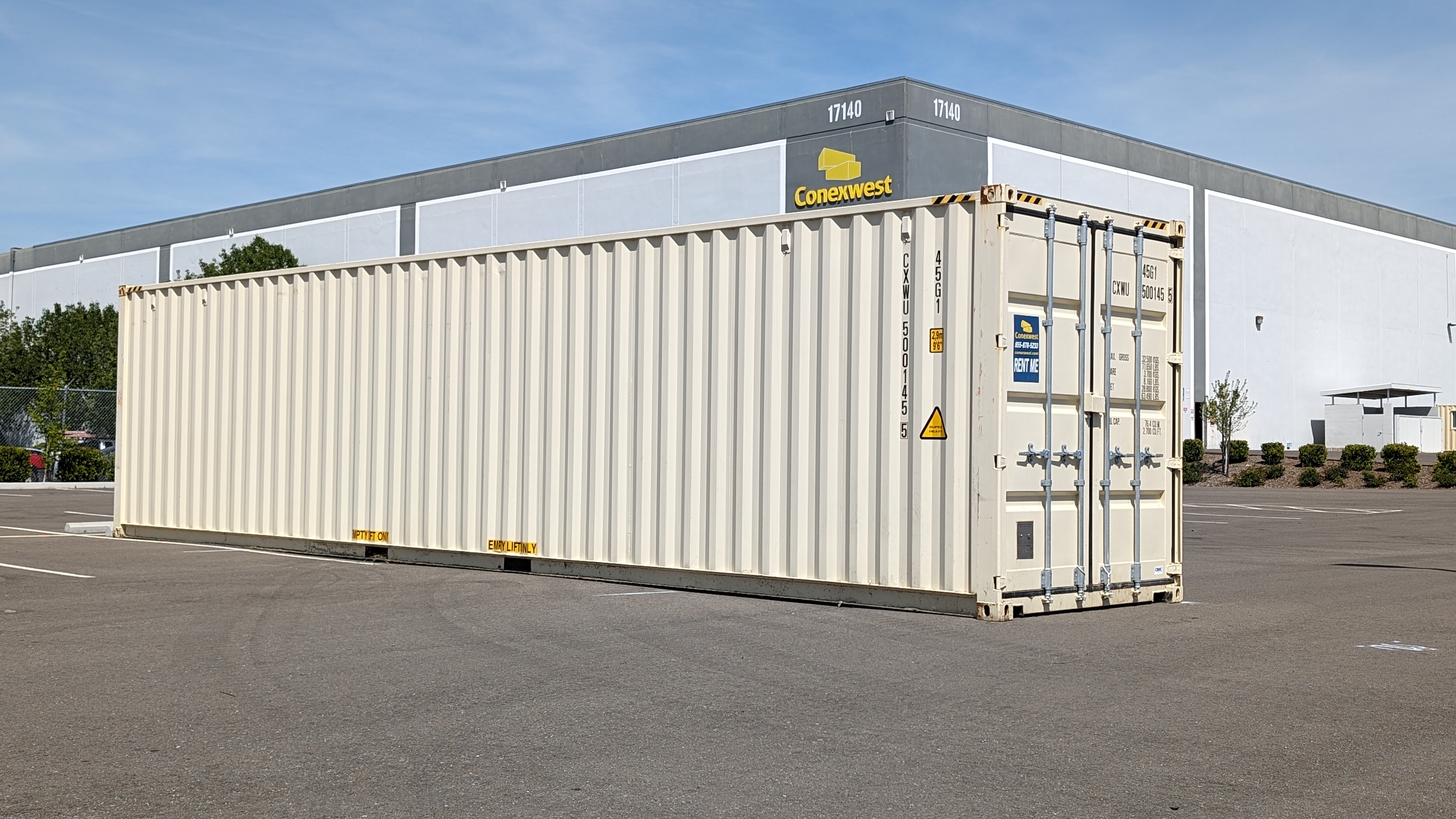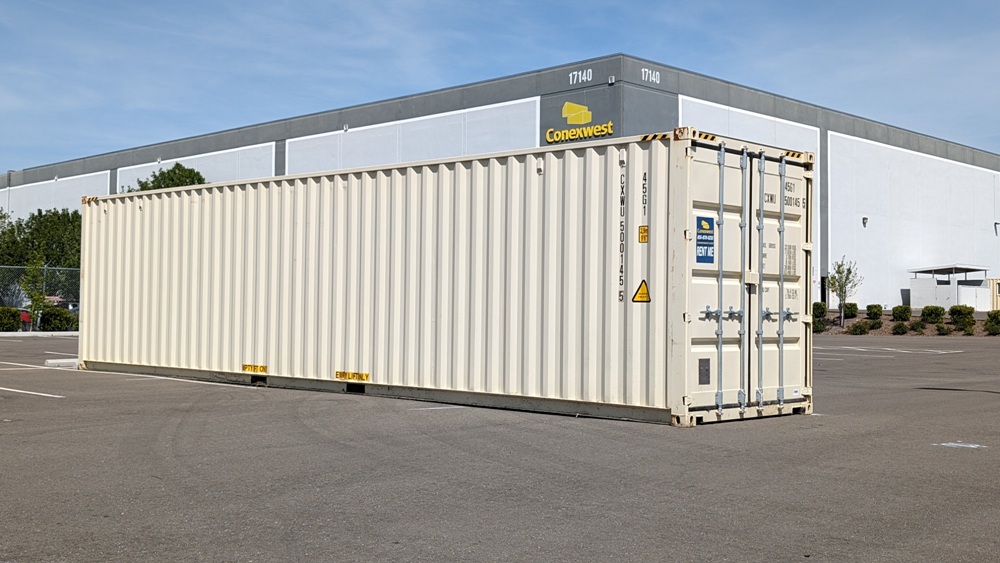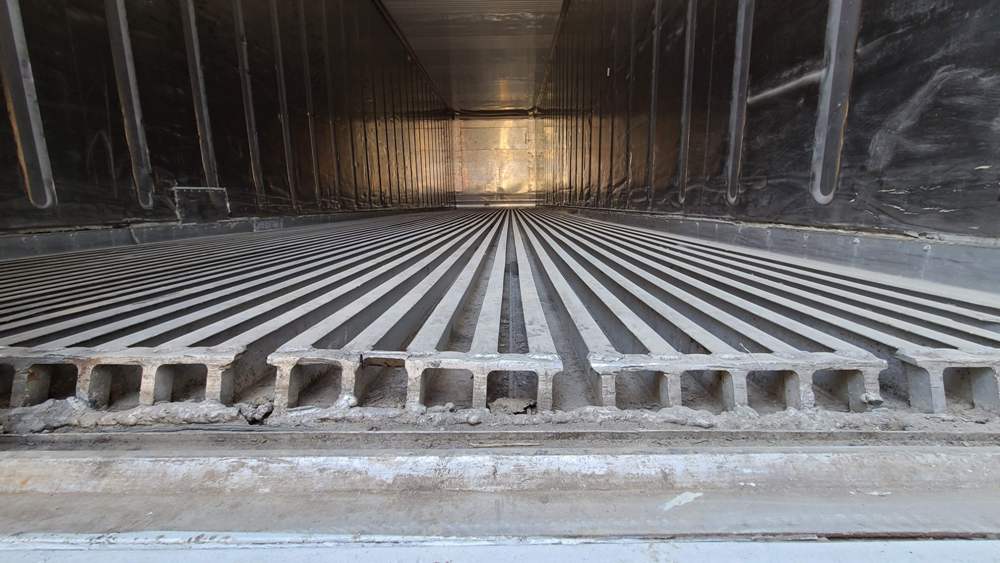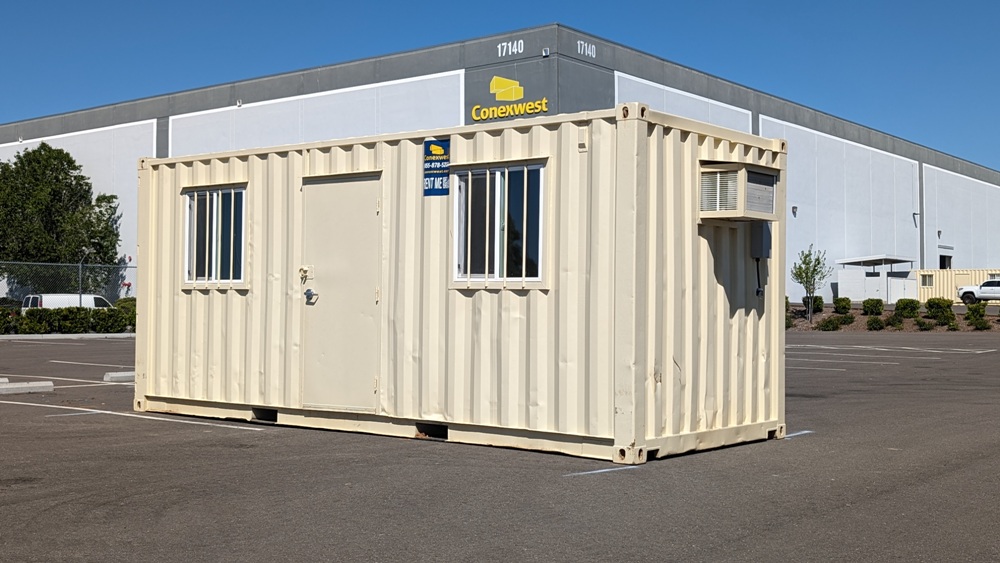
Learn More About Shipping Containers
Shipping Containers: Sizes, Types, and Solutions for Every Need
Shipping containers provide versatile, durable storage and space solutions for businesses and individuals alike. From standard 20ft units to specialized high cube designs, Conexwest offers a comprehensive range of ISO shipping containers to meet your specific requirements. Discover the perfect container size, type, and customization options for your project.

Understanding Shipping Container Dimensions
ISO shipping containers follow standardized dimensions established by the International Organization for Standardization, ensuring consistency and compatibility worldwide. These precise measurements allow for efficient transportation, stacking, and modification while providing predictable space for your storage or conversion projects.
Every inch of a shipping container is engineered for maximum utility, with external and internal dimensions precisely calibrated to optimize space while maintaining structural integrity.
Standard 20ft Container Specifications
- External Dimensions: 20' x 8' x 8'6"
- Internal Dimensions: 19'4" x 7'8" x 7'10"
- Door Opening: 7'8" x 7'5"
- Cubic Capacity: 1,172 cubic feet
- Tare Weight: 5,071 lbs
- Max Payload: 47,910 lbs
- Floor Area: 150 sq ft
Standard 40ft Container Specifications
- External Dimensions: 40' x 8' x 8'6"
- Internal Dimensions: 39'5" x 7'8" x 7'10"
- Door Opening: 7'8" x 7'5"
- Cubic Capacity: 2,390 cubic feet
- Tare Weight: 8,159 lbs
- Max Payload: 59,041 lbs
- Floor Area: 305 sq ft
Shipping Container Types and Specialized Options
Beyond standard containers, specialized variations offer solutions for specific needs. From extra height to refrigeration capabilities, these purpose-built containers provide enhanced functionality for diverse applications.
High Cube Containers
High cube containers provide an additional foot of height, offering significantly more vertical space for taller items or conversion projects:
- Extra 12 inches of interior height (8'10" vs 7'10")
- Available in 20ft, 40ft, and 45ft lengths
- Ideal for retail conversions and office spaces
- Perfect for inventory with vertical storage needs
- Additional cubic capacity (2,694 cu ft in 40HC)
- Same footprint as standard containers
- Compatible with standard container handling equipment

Open Side Containers
When side access is essential, open side containers provide the perfect solution with full-length access doors:
- Full-length side opening doors for easy loading
- Available in 20ft and 40ft configurations
- Ideal for oversized cargo that won't fit through standard doors
- Lockable, weather-resistant side panels
- Maintain same external dimensions as standard containers
- Simplified loading and unloading of palletized goods
- Superior access for retail or workshop conversions

Refrigerated Containers
For temperature-sensitive storage needs, refrigerated containers (reefers) provide reliable climate control:
- Temperature range from -20°F to 80°F
- Available in 20ft and 40ft lengths
- Integrated cooling system with digital controls
- Insulated walls, ceiling, and floor
- Independent power supply connections
- Interior T-track flooring for air circulation
- Ideal for food, pharmaceuticals, and sensitive equipment

Container Condition Options
Conexwest offers containers in various conditions to match your budget and application requirements. Understanding these condition classifications helps ensure you select the right container for your needs.
| Feature | New/One-Time Use | Cargo Worthy | Wind & Water Tight | As-Is |
|---|---|---|---|---|
| Exterior Condition | Pristine | Minor dents/scratches | Visible wear | Significant wear |
| Interior Condition | Pristine | Clean, minimal wear | Some wear/marks | Used appearance |
| Weather Resistance | Perfect seal | Excellent seal | Good seal | May have issues |
| Certifications | Full CSC certification | CSC certified | No certification | No certification |
| Ideal Use | Shipping, conversion | Shipping, storage | Stationary storage | Budget storage |
| Relative Cost | Highest | High | Medium | Lowest |
While new containers offer pristine condition and full certification, cargo worthy and wind & water tight options provide excellent value without compromising essential functionality for most storage applications.
Popular Shipping Container Applications
The versatility of shipping containers extends far beyond transportation, with innovative uses across numerous industries. Their inherent durability, mobility, and modular design make containers ideal for a wide range of creative applications.
Business Applications
- Retail Pop-Up Shops: Quick-deploy storefronts
- Office Spaces: Modular workplaces
- Equipment Storage: Secure, weatherproof protection
- Workshop Spaces: Durable fabrication environments
- Construction Site Offices: Mobile headquarters
- Inventory Overflow: Scalable storage solution
- Equipment Rentals: Secure, portable showrooms
Specialized Applications
- Emergency Housing: Rapid deployment shelters
- Medical Clinics: Mobile healthcare facilities
- Agricultural Storage: Farm equipment protection
- Art Studios: Creative spaces with natural light
- Cold Storage: Temperature-controlled inventory
- Educational Spaces: Classroom extensions
- Data Centers: Secure, climate-controlled IT housing
Custom Container Modifications
Transform standard containers into purpose-built spaces with our comprehensive modification services:
- Windows and skylights for natural lighting
- Personnel doors and roll-up doors for access
- Electrical systems with outlets and lighting
- Insulation for temperature control
- HVAC systems for climate management
- Custom interior buildouts with walls and flooring
- Security upgrades including high-grade locks

Learn more about our comprehensive field services for container modifications and customizations.
Selecting the Right Container for Your Needs
Choosing the ideal container involves evaluating several key factors to ensure it meets your specific requirements. Consider these essential elements when making your selection:
Space Requirements
- Calculate total cubic footage needed
- Consider height requirements for stored items
- Determine if aisle space is needed within container
- Assess if standard or high cube height is required
- Factor in space for any internal fixtures or shelving
- Consider future growth needs
Placement Considerations
- Ensure adequate access for delivery truck
- Verify level ground with proper drainage
- Consider door clearance requirements
- Check for overhead obstructions
- Review local zoning regulations
- Plan for safety and security at location
Frequently Asked Questions
- What are the standard sizes of shipping containers?
The most common standard sizes are 20ft and 40ft containers, with external dimensions of 20' x 8' x 8'6" and 40' x 8' x 8'6" respectively. High cube variations add an additional foot of height. Less common sizes include 10ft, 45ft, and 53ft containers, though availability varies by location.
- How much weight can a shipping container hold?
A standard 20ft container has a maximum payload capacity of approximately 47,900 lbs, while a 40ft container can handle around 59,000 lbs. High cube variations maintain similar weight capacities to their standard height counterparts. Always verify the specific rating on your container as capacities may vary slightly between manufacturers.
- What's the difference between a standard and high cube container?
The primary difference is height. Standard containers have an interior height of 7'10" (2.38m), while high cube containers offer 8'10" (2.69m) of interior height—an additional foot of vertical space. All other dimensions remain the same, and both types are compatible with standard shipping infrastructure.
- How long do shipping containers last?
With proper maintenance, shipping containers typically last 25-30 years. New containers used for stationary storage can last even longer—up to 40 years—when properly maintained and protected from extreme conditions. Regular inspections, rust prevention, and addressing minor issues promptly will maximize container lifespan.
- Do I need a permit to place a shipping container on my property?
Permit requirements vary by location. Many residential areas require permits for containers, while rural or industrial zones may have fewer restrictions. Always check with local zoning authorities, homeowners associations, and building departments before placing a container. Conexwest can provide guidance on common regulatory requirements.
- Can shipping containers be stacked?
Yes, shipping containers are designed to be stacked up to 9 high when fully loaded (in shipping configuration). For static storage or structure applications, professional engineering is recommended for stacks over 2 containers high. Corner posts bear the load, so proper alignment is essential, and modifications like doors or windows may impact structural integrity.
- Are shipping containers waterproof?
New and well-maintained shipping containers are waterproof by design. All Conexwest containers classified as "new," "one-time use," "cargo worthy," or "wind and water tight" provide complete protection from rain and water ingress. Only "as-is" containers may have compromised seals that could allow water entry in extreme conditions.
- How are shipping containers delivered?
Containers are typically delivered via tilt-bed or flatbed trucks. Delivery requires adequate access for a large truck (typically 45-70 feet in length) and sufficient clearance for offloading. The site should be reasonably level and have firm ground capable of supporting both the truck and the container weight. Conexwest provides comprehensive delivery services with experienced drivers.
- Can shipping containers be moved after placement?
Yes, containers can be relocated using appropriate equipment. Empty containers can be moved with a forklift (minimum 8,000 lb capacity for 20ft, 10,000 lb for 40ft), crane, or specialized container handling equipment. Containers should be lifted only at designated lifting points to prevent structural damage. Conexwest offers relocation services for previously purchased containers.
- What is the difference between one-time use and cargo worthy containers?
One-time use containers (also called "new" or "one-trip") have made only one journey from manufacturing facilities in Asia to North America. They appear nearly new with minimal wear. Cargo worthy containers have been in active service for international shipping but remain certified for ocean transport with valid CSC plates. Both offer excellent weather protection, with one-time use providing premium aesthetics at a higher price point.
Find Your Perfect Shipping Container Solution
Conexwest's container experts are ready to help you select the ideal container for your specific needs. With multiple locations across the Western United States, competitive pricing, and expert delivery services, we make container procurement simple and stress-free.
Contact our team today to discuss your requirements, request a personalized quote, or schedule a visit to one of our container yards.
